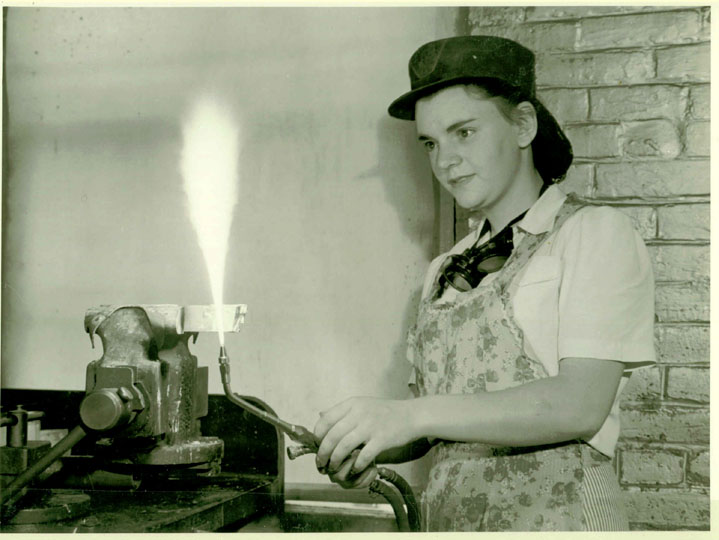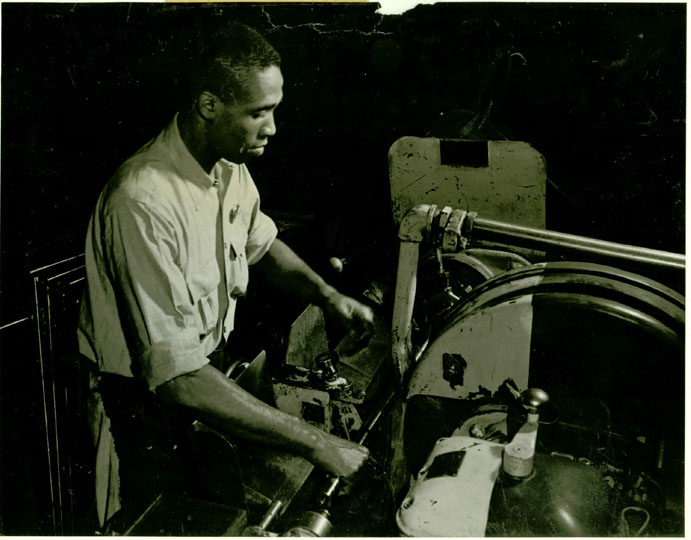
A young woman practicing her brazing technique
The 20th Century brought warfare on an industrial scale, and unprecedented demands on the Armory's production capacity. Previously the domain of white male workers, the Armory began hiring women and African American workers during World War I. After the Armistice in 1918, most of the women and nonwhite workers were laid off, and the Armory returned to a smaller and less diverse workforce. With the advent World War II, the Armory again had to turn to women and minority workers to meet prodution demands and replace the regular workforce who were now serving in the Armed Forces.

An African-American worker grinding barrels for rifles
Both eras saw tensions between the incumbents and the newcomers, along with efforts by management to smooth them over in the interest of productivity. In many cases, women were greeted with mockery or outright hostility but won the respect of the male workers when they got the chance to show what they could do. African-Americans were similarly seen through a screen of prejudice but were able to prove themselves and build good careers. These stories are not well documented, but can be inferred from the oral histories collected on this site.
The articles on women and immigrants at Springfield Armory were written by students in UMass Amherst professor Laura Lovett's history History 594F: "US Immigrant Women". These students provide interesting viewpoints on Armory History, such as this one on Hairstyles.
|